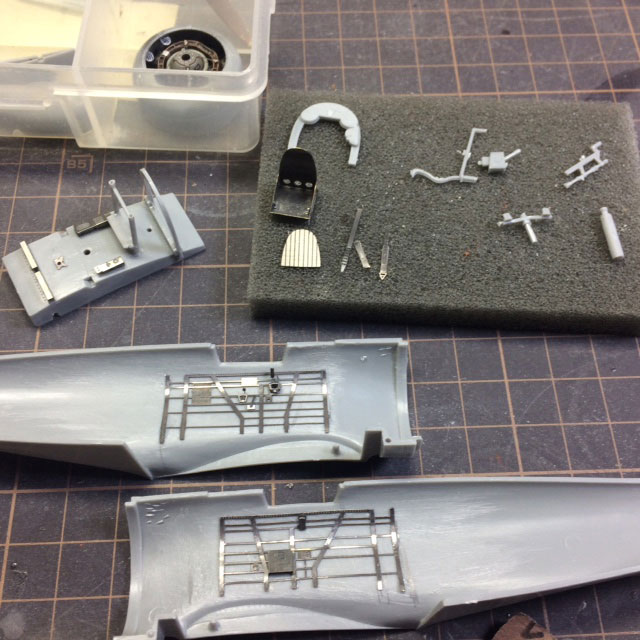Hasegawa's 1/48 scale
Nakajima Ki-27b
by Hernan Amalfi
|
Nakajima Ki-27b
2nd Chutai 24 Sentai, Phillipines, December, 1941 |

True Details' 1/48 scale Ki-27 Wheels and Spats are available online from Squadron for only $4.99!
Background
The Nakajima Ki-27 was the first monoplane fighter of the Imperial Japan Army Air Force. It entered service in 1937 as Army Type 97 Sen, remaining in front line service until at least 1942. Its design reflects the current Japanese thinking, at the same time advanced and conservative.
Its designer Koyama Yasushi strove for getting the lightest airframe possible, with as big a wing surface as possible, to confront both the Japanese fighter pilots conservatism (which view low speed turning combat as the optimum tactic) and the Kawasaki monopoly as the Army provider. He succeeded, even against a land A5M version (a plane that shares the same design philosophy).
In combat the Ki.27 was a success, both against the variously-equipped and poorly trained and motivated Chinese as well as the disconcerted Allied forces in the Malaya and early Burma campaigns. Most of the fighters encountered over Malaya, Singapur and Rangoon were Ki-27s (with smaller numbers of Ki-43 or the odd Ki-44), and not, of course, “Zeroes”.
In common to any Japanese fighter design, the Ki-27 was poorly armed, with no armour or self-sealing tanks and its light structure prone to fall to pieces under fire, that is if anyone managed to put some shots on one.
Most probably, in a more even campaign, it would have suffered heavy losses.
This is the Hasegawa (ex-Mania) kit. Cockpit was furnished with the Eduard PE 48264. A Rob Taurus vacuformed canopy was used (RB48005).
Engine: it was detailed with the oil radiator, air intakes and gun blast tubes, pushrods and exhaust collector ring in scratch. Ignition wiring was PE.

Cockpit: sidewall detail was erased and replaced by PE. The same with the seat (always a great improvement) Instrument panel also came from the PE set, as did several details for the floor and sidewalls; others were scratchbuilt. The butts for the MGs were added from resin parts.

Wings: the main problem was the lack of dihedral, which was carefully increased to the correct 8 degrees. Pitot tube was scratchbuilt. The cartridge ejectors were perforated, as was the access door to the u/c leg trunnion. To provide some interest, the spats were removed and internal detail scratchbuilt.
Fuselage: The rudder was cut out and posed deflected. The telescopic sight was scratchbuilt.
The very interesting field applied camouflage in three colours was executed according to the references found on the internet. The colours were mostly home mixed to the Japanese standards of #21 Midori Iro (Green), #28 Rei San Shoku (Indigo Blue) and #33 Khaki Iro (Sandy Earth) for the upper surfaces. Undersurfaces were painted “IJAAF Light Grey”. The colours were applied over the primer using “floating masks” and post shaded in lighter tones of the same hues.
All the insignia were painted. No decals in this model whatsoever! Masks were cut from Tamiya tape and applied to paint Hinomarus and squadron insignia.
Weathering was applied with Black and Brown pastel powders and China ink. Black oils were applied to mimick engine oil leaks.
The model was then finished in Satin varnish.
I wanted to concentrate in an elaborate paintwork. The model in itself is an easy build; the only pitfall to watch is the lack of dihedral. The paintwork was complex but fun, and makes the model look really smart. It was a very satisfying build.
Sources
- Various Internet sources.
Images and Text
Copyright ©
2017 by Hernan Amalfi
English Text Translation Copyright ©
2017 by Fernado Rolandelli
Page Created 28 February, 2017
Last Updated
28 February, 2017
Back to HyperScale Main Page
|
Home
| What's New | Features | Gallery | Reviews | Reference | Resource Guides | Forum |